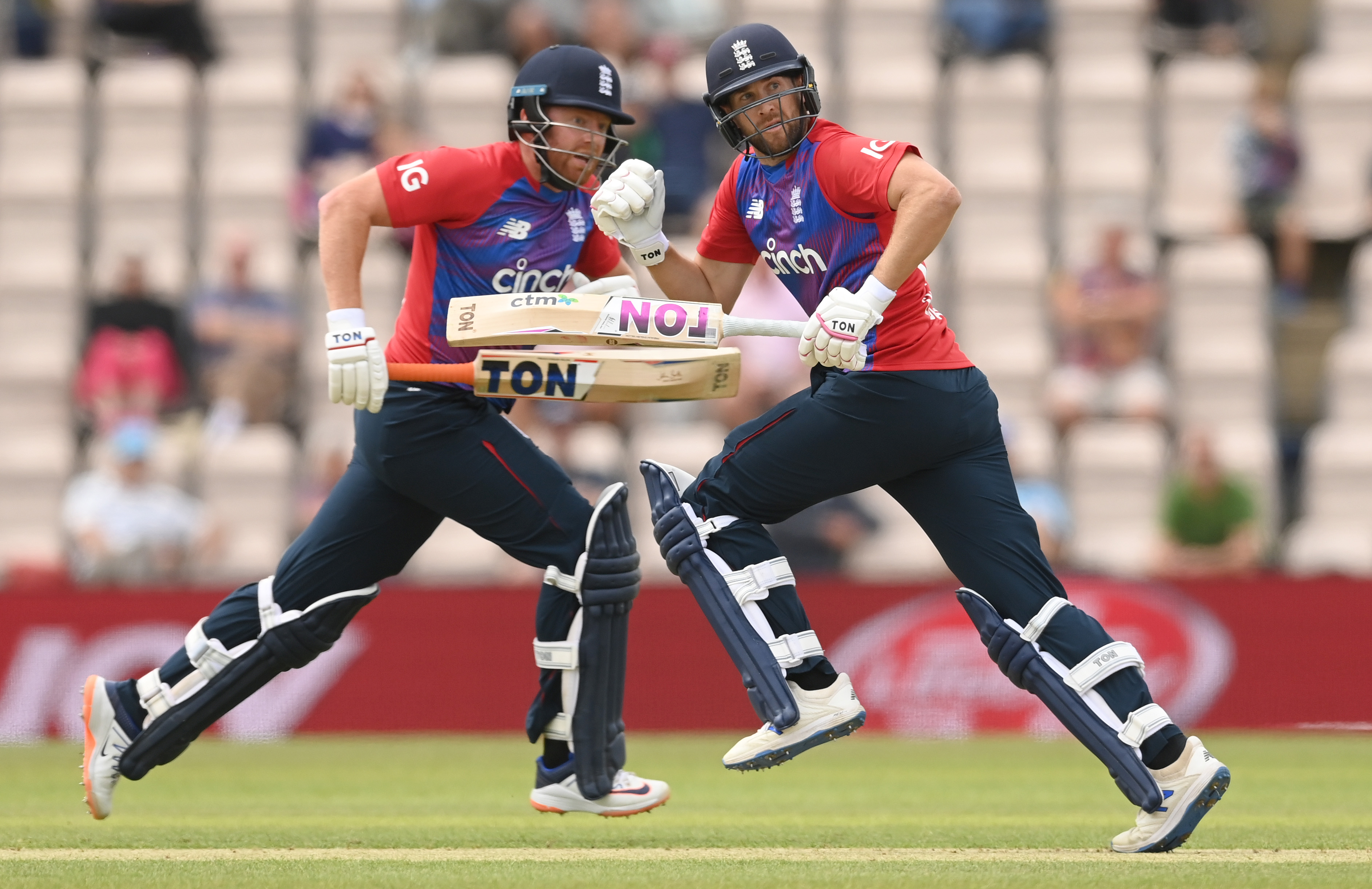Questions remain unanswered as England’s puzzling selections complicates WT20 plans
With the World T20 four months away, England are straying further and further away from discovering their best combination.

That England eventually swept the series 3-0 surprised none. Not only did Sri Lanka enter the tour without a bilateral T20I series win in two years, England naming a full strength squad - well, minus Stokes and Archer at least - had tilted the odds in the hosts’ favour even before a single ball had been bowled. Yet despite the convincing series win, the Three Lions find themselves in a bizarre position. They are now farther away from zeroing-in on the World T20 squad than they were prior to the series, and Morgan’s men, really, gained nothing from a low-intense, one-sided three-match affair that saw both their frontline openers pick-up muscle injuries. We look at the key talking points from the T20I series that did more harm than good to England’s World T20 plans.
Failure to give Jonny Bairstow an extended run at the No.4 position
Jonny Bairstow has been the biggest victim of the English management playing musical chair with batting positions in T20I cricket but, over the past few months, it became evident that No.4 was where Morgan and England envisioned the right-hander batting; prior to the commencement of the Sri Lanka series, Bairstow had batted at No.4 in seven consecutive T20I matches. However, flabbergastingly, the 31-year-old batted only once at No.4 in the three-match series, playing as an opener in each of the last two games.
While it is understandable that Bairstow was deployed as a makeshift opener to cover-up for the unforeseen injuries to Buttler and Roy, the fact remains that the management missed a golden opportunity to give the Yorkshireman more experience as a middle-order batter. Given Bairstow opens in both the IPL and the Vitality Blast, it was of paramount importance for him to bat No.4 against the Lankans, in order to get more accustomed to the role heading into the World T20, but by moving him up the order, England ended up prioritizing short-term gains.
All of Billings, Livingstone, Curran and Willey had prior experience opening the batting - either at international or domestic level - and with Bairstow being a lock for the No.4 spot, it would have been prudent on the management’s part to fix his position and play around with the rest of the order. But their short-sighted decision now means that the right-hander will once again have to spend time ‘adapting’ if and when he is inevitably pushed down the order.
Moeen Ali’s wasted series
England’s decision to bench Moeen Ali for the entirety of the five-match series against India baffled many, but the all-rounder was expected to play a key part in the Sri Lanka T20Is, particularly after having impressed in the IPL. Yet England’s step-motherly treatment of the southpaw continued as the 34-year-old was a part of the playing XI in only one match - a dead rubber in which he walked in to bat with 3 overs to spare. England did not utilize Moeen’s off-spin too much either, with him summoned by Morgan only in the 19th over, when the visitors were already nine wickets down.
While it is too early to draw conclusions, one cannot help but feel that England are hurting their own WT20 chances by alienating Moeen. A three-match series against a depleted Lankan side was the perfect opportunity to get the all-rounder back into the scheme of things, but by freezing Moeen out of the starting XI, England are pushing themselves into a corner.
With respect to Moeen, there are more pros than cons. Not only would the 34-year-old give the side a second spinning option which England otherwise don’t have (Livingstone is nothing more than a part-timer), he could also serve as a potential back-up (or replacement, even) for the No.3 slot. Malan - not for the first time - vindicated his selection by posting a fine fifty in the decider, but deploying Moeen - a proven top-order batsman in subcontinent conditions - at No.3 would have given the Three Lions a plan B heading into the World T20. By isolating the all-rounder, England are all but shooting themselves in the foot.
The never-ending middle-order conundrum
Post the 2-3 series defeat against India, it became evident that the middle-order was the biggest point of concern for the Three Lions. Ben Stokes’ injury threw spanner in the Three Lions’ works, but, ultimately, across the three T20Is against the Lankans, Morgan & Co. learned little about the middle-order’s potential composition for the WT20.
As discussed above, the promotion of Bairstow meant that the dynamics of the middle-order changed. Bairstow’s promotion, coupled with Stokes’ injury, paved the way for Liam Livingstone and Sam Billings to get a somewhat-extended run. But while the duo did stitch a very mature, match-winning partnership in the second T20I in Cardiff, there was little that suggested that England were looking at either batter as a potential first-teamer. Livingstone’s promotion to No.3 in the third T20I, in fact, made it evident that the Three Lions were in no way keen to keep the flamboyant right-hander at No.6, the only slot that could get freed up should Stokes, by chance, take Malan’s No.3 spot.
Giving three consecutive matches to a middle-order of Malan-Bairstow-Morgan-Livingstone could have provided continuity, but England chose otherwise. And thus they now end the series basically where they began: square one.
The Chris Woakes dilemma
At first England’s selection of Chris Woakes felt nothing more than a token call-up, an apology for how unacceptably they handled him through the winter. Yet the right-armer’s impeccable showing in the two T20Is he played - 1 wicket and an ER of 3.28 - means that a selection headache could potentially start to brew. Should England, after having ignored Woakes for six years, consider the all-rounder in their WT20 plans? And, if they do, whose place does he take?
Realistically, Woakes should be fighting with Sam Curran for the #7 slot. Both are bowling all-rounders who can lengthen the batting and both are at their very best when they have the new cherry in hand. But Curran’s spot being all but fixed - he is one of six players to play each of England’s last 9 T20Is and he won the Man of the Series award versus Sri Lanka - means that Woakes would be competing for a spot in the starting XI with Jordan, thanks to the places of Rashid, Archer and Wood being fixed.
Jordan adds pace and some death-bowling firepower to the team’s arsenal but England’s woes with the new-ball are well-documented. The addition of Woakes - who had the third best average for any bowler in the powerplay in IPL 2021 - would not only make the side more threatening in the powerplay, it would also ease pressure off Archer, and allow Morgan to utilize both Wood and Archer in accordance with the match situation.
But given Jordan’s continued presence in the side of late - he, like Curran, has played each of England’s last 9 T20Is - such a swap looks unlikely. But should things go south for Jordan against Pakistan and, equally, should Woakes keep up his form, things could then get interesting.

Comments
Sign up or log in to your account to leave comments and reactions
0 Comments